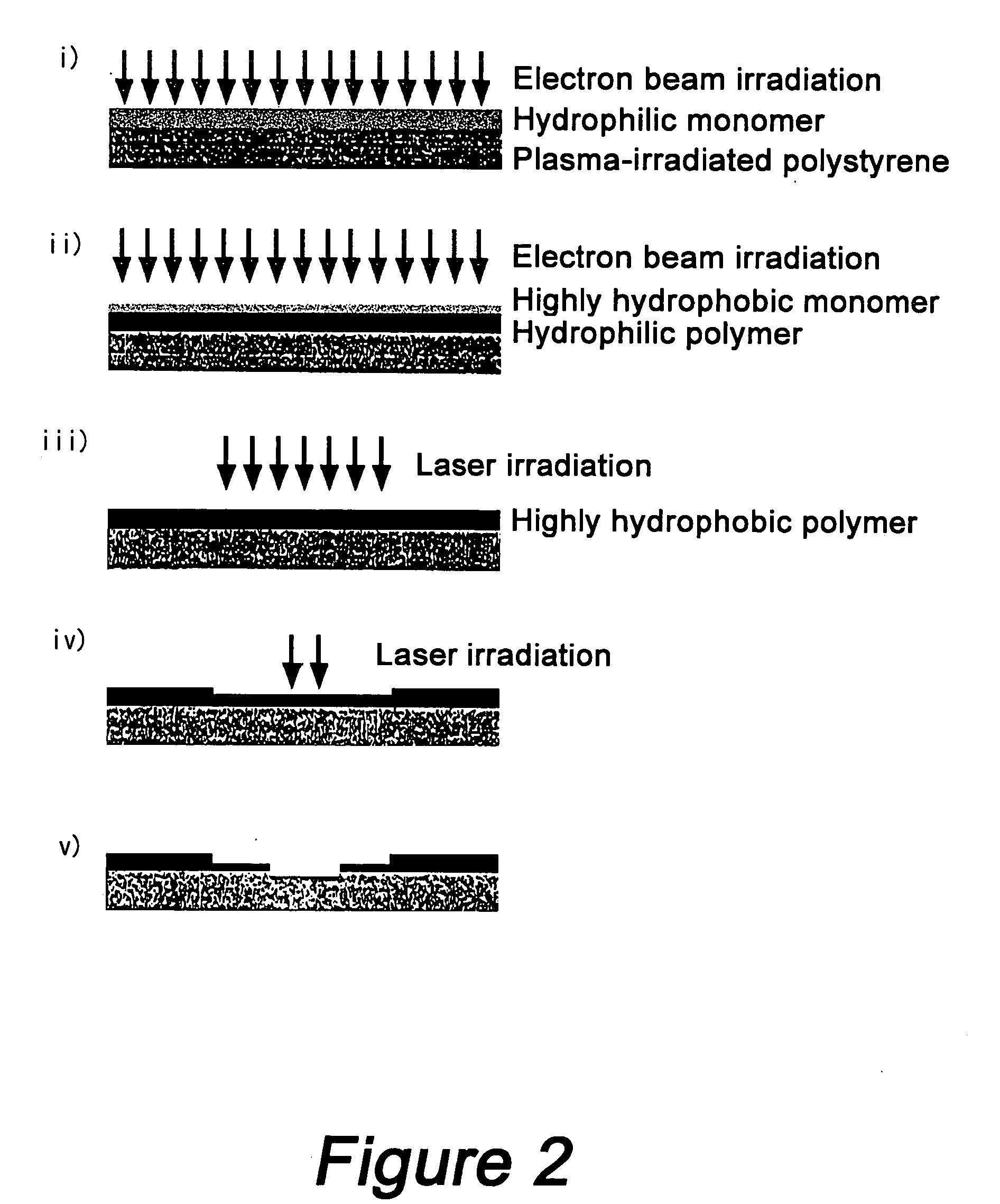High-density cell array board, process for producing the same and method of using the same
a high-density cell array and high-density cell technology, applied in biomass after-treatment, instruments, coatings, etc., can solve the problems of insufficient achievements in treating some types of solid cancer, no effective evaluation method, and clinical application of such a system is definitely impractical in terms of scale and necessary labor
- Summary
- Abstract
- Description
- Claims
- Application Information
AI Technical Summary
Benefits of technology
Problems solved by technology
Method used
Image
Examples
examples
[0031] The following examples further illustrate the present invention without, however, limiting the invention thereto.
examples 1-5
[0032] Poly-N-isopropylacrylamide, polyacrylamide and polydimethylsiloxane were used as cell adhesive polymer, hydrophilic polymer and highly hydrophobic polymer, respectively. The concentrations of the monomer and polymer solutions used for preparing each layer are shown in Table 1. These solutions were used for preparing each layer by the procedure described below. First, a solution of N-isopropylacrylamide monomer in isopropyl alcohol at the concentration shown in Table 1 was applied on a polystyrene base in an amount of 0.01 ml / cm2 in order to prepare a cell adhesive polymer-coated domain. The coating was irradiated with electron beams at a dose of 0.25 MGy to coat the surface of the base with poly-N-isopropylacrylamide. After irradiation, the substrate was thoroughly washed with water and dried to give a substrate having a poly-N-isopropylacrylamide layer. The amount of poly-N-isopropylacrylamide coated on the substrate is shown in Table 2. Then, a solution of acrylamide monome...
example 6
[0035] A high-density cell array substrate was obtained by a similar preparation process to that of Example 1 except that a 20 wt % solution of a phenol resin having 1,2-naphthoquinone diazide-4-sulfonate on the side chain in dioxane was used to prepare cell adhesive polymer-coated domains. The amount of said polymer coated on the resulting substrate was 1.1 μg / cm2. Then, cells were seeded and an assay was made with dichlorobenzene by similar procedures. Cells could be separated and recovered by irradiating each hydrophilic polymer-coated domain with UV light for 5 minutes. It could be confirmed that this method could selectively separate and recover cells in a single hydrophilic polymer-coated domain by focusing light on each hydrophilic polymer-coated domain.
PUM
| Property | Measurement | Unit |
|---|---|---|
| Fraction | aaaaa | aaaaa |
| Fraction | aaaaa | aaaaa |
| Fraction | aaaaa | aaaaa |
Abstract
Description
Claims
Application Information
 Login to View More
Login to View More - R&D
- Intellectual Property
- Life Sciences
- Materials
- Tech Scout
- Unparalleled Data Quality
- Higher Quality Content
- 60% Fewer Hallucinations
Browse by: Latest US Patents, China's latest patents, Technical Efficacy Thesaurus, Application Domain, Technology Topic, Popular Technical Reports.
© 2025 PatSnap. All rights reserved.Legal|Privacy policy|Modern Slavery Act Transparency Statement|Sitemap|About US| Contact US: help@patsnap.com



